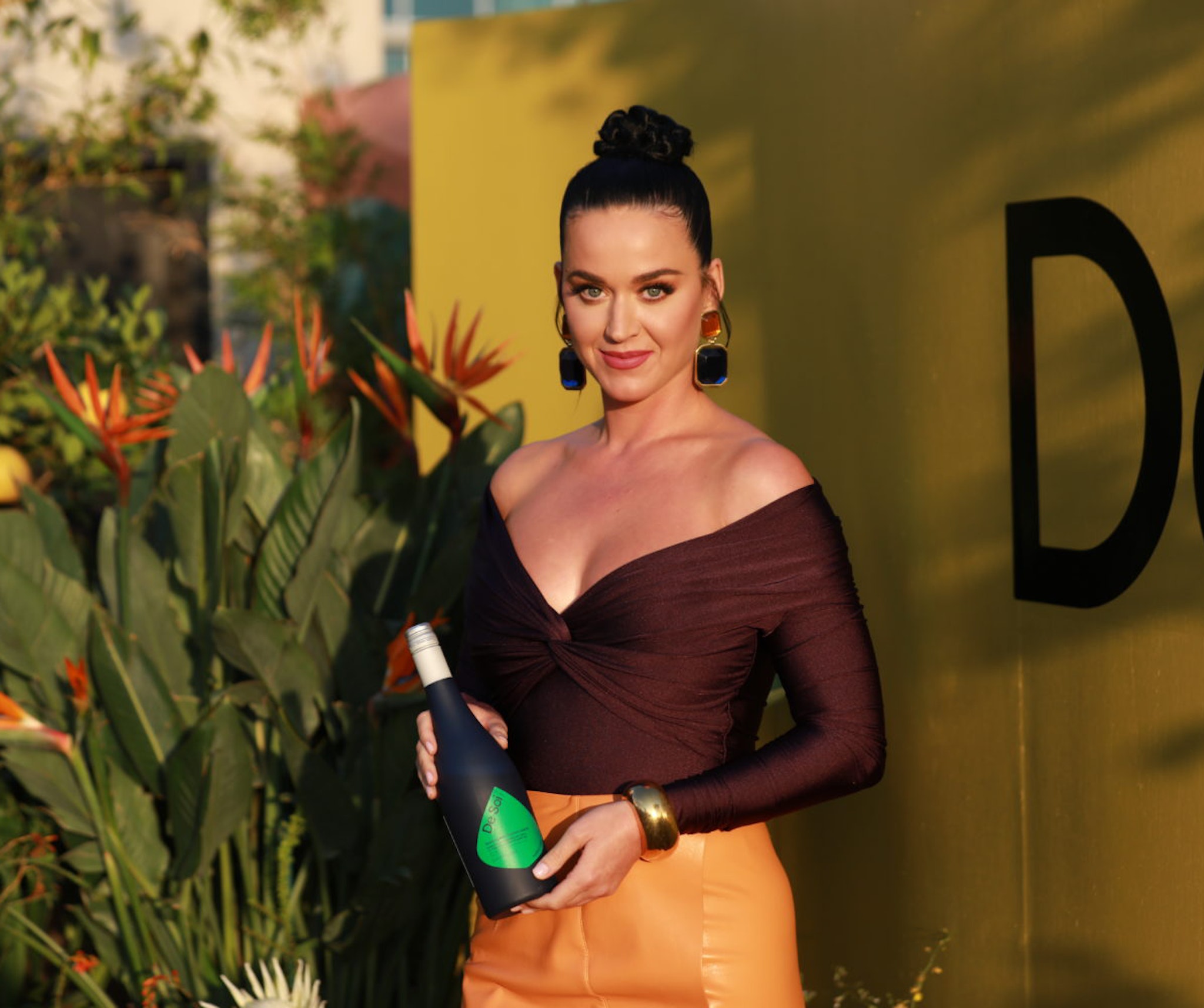Scout Brisson started her career as a McKinsey consultant who was providing strategic frameworks and execution plans for companies looking to launch new products, enter new markets or simply figure out how to reaccelerate growth. Since leaving McKinsey, she’s worked in the venture capital industry, the entertainment industry, and even co-founded one of the fastest-growing brands in the world of consumer today, Deux.
When Katy Perry and award winning distiller, Morgan McLachlan, founded De Soi, a line of sparkling, non-alcoholic aperitifs in 2020, they wanted to hire a CEO that would successfully commercialize their product and transform it into a key player in the non-alcoholic beverages movement. They were looking for someone with strong leadership skills, strategic insights, and most importantly, someone who had a pulse on what it takes to build a successful CPG brand.
Scout joined De Soi in 2021 as General Manager. In 2022, she was promoted to Chief Executive Officer.
Now, she has the biggest task of her career in front of her – make De Soi a household name in the non-alcoholic beverage market; and do it while the US consumer economy is crumbling and the venture capital markets are frozen.
We caught up with her to learn how she plans to expand the non-alcoholic beverage market and cut De Soi a big slice of it.
The Non-Alcoholic Movement.
To understand the recent boom of the non-alcoholic beverage market, it’s important to consider the underlying tension consumers have had towards alcohol for decades now. There are three overlapping types of customer personas that the market has built upon.
- Sober Curious Drinkers
- Productive Drinkers
- Health Conscious Drinkers
Notice that each of the personas that comprise the non-alcoholic beverage market are labeled “drinkers”. That’s because the vast majority of them still consume alcohol. Although alcohol abstinence is rapidly growing, it’s still an insignificant portion of demand to consider.
We asked Scout to explain this to us. She shared, “There’s a place for alcohol in life, but people are understanding its impact a bit more today than they were in the past. Over 80% of our customers still drink alcohol. Non-alcoholic beverages are very much for the moderation cohort.”
What Scout highlights is a very important point to understand and a key driver of the market.
Sober Curious Drinkers. This is one third of the movement and comprises people who are evaluating their relationship with alcohol and wanting to understand what it feels like to not consume it in environments where it is normalized.
Scout explained, “For a long time, your options at a party were to carry around a cup of alcohol and pretend to drink or drink nothing at all. Non-alcoholic beverages allow for new options in these environments without any stigma. And better yet, they’re sophisticated and interesting to drink.”
We can almost directly point to “party culture” as a highly corollary variable to drinking culture in the US. In other words, to party means to drink. Providing optionality that allows consumers to party, but not necessarily drink has been important to the sober curious movement.
To be clear, these individuals do still consume alcohol. However, tasty, non-alcoholic beverages have given them a choice that previously did not exist.
Productivity Drinkers. This is another third of the larger movement driving overall demand for non-alcoholic beverages. Scout describes herself as a participant of this bucket of consumers.
She explained, “ I started drinking more during COVID and would have a glass of wine most nights. It was a great way to mark the end of my day when I didn’t have another way to do that. I had to be awake at 6am most mornings, but still wanted to indulge in something that relaxed me in the evenings.”
Another example of this would be parents who need to pack their children’s lunch in the morning without feeling slow or tired. Non-alcoholic beverages still allow customers to feel a sense of indulgence, satisfaction, and more importantly, participation in relaxing behavior.
They still drink alcoholic beverages, but only on some nights where their schedule allows.
Health Conscious Drinkers. The remaining third of the movement is driven by individuals who want to drink less to protect their health. Simply explained, alcohol is a drug. These individuals make up the portion of the movement that is limited how much they consume to improve their mental and physical well being.
De Soi Makes New Friends.
De Soi’s thesis is rooted in providing optionality. While the subset of consumers who are sober, curious, productivity focused and health conscious have been around forever, they’ve lacked optionality.
Scout further explains, “It’s really hard in some of these subcategories to make something that tastes great. The more great tasting options that there are and at various price points, the more penetration that non-alcoholic beverages will see across different markets in the US.”That’s been lacking for decades.
What’s more is that places that serve alcohol have also traditionally been under staffed and ill equipped with servicing non-alcoholic options. De Soi, amongst many others, comes as an already pre-mixed cocktail that has a premium taste which can directly be poured over ice.
“Most of our customers have never had a non-alcoholic adult beverage before trying De Soi,” Scout shared, “We’re introducing people to this category, and this is their first product experience.”
So how exactly is Scout and her team at De Soi convincing customers to indulge in De Soi when they’ve never explored the consumption of non-alcoholic beverages?
De Soi is focused on helping their customers understand what a non-alcoholic beverage is and what it tastes like before they hold it in their hands.
Scout explains, “Whether they found us through Katy’s or De Soi’sInstagram, our team is focused on answering the questions:, what is this, what does it taste like, why do you drink it, when do you drink it, how do you drink it.”
This level of product education is rare. If De Soi followed a traditional playbook of encouraging sales, they would’ve missed out on a huge, but important point step of helping customers understand what the product experience would be like.
This is something that De Soi is arguably also doing much more intimately and effectively than other non-alcoholic beverage competitors.
Scout and her team think about customer education in three buckets: Visual education, occasion education, and account education. All three are vital components of how they help the consumer understand why they should purchase the product.
Visual Education. This bucket has to do with providing an overall understanding of the product category. In other words, it answers the question of why De Soi exists.If you scroll through De Soi’s instagram, you’ll find a very curated collection of product photography that utilize specific glassware, colors and motion graphics for the pouring of the product. They mostly focus on showcasing their 750ML bottle that looks like a wine bottle. This is all intentional and meant to highlight that De Soi is a drink for a relaxing occasion. The product is for drinks who want to wind down or indulge without getting drunk.
Occasion Education. When you receive email marketing from De Soi, you’ll notice they are focused on a different bucket. Their emails mostly consist of educating the customer on how to enjoy the product. For example, they match tactical knowledge tasting notes with photos of dinner parties and swimming pools. These are all occasions where customers typically feel most pressured to drink alcohol. De Soi is highlighting that their products serve as a better alternative to not drinking anything in those moments.
Account Education. The last bucket of education falls into the category of distribution. Compared to any other beverage, De Soi’s sales team is spending more time with retail partners from an education standpoint. Not only do they need to convey why a retailer should carry De Soi, but they also have to spend a lot of time explaining what the category is and where the company fits into the picture. Since the category is still in its infancy, staff training and sales enablement is the biggest channel. Ultimately, Katy Perry helps customers get introduced to the company, but as Scout explains, “it takes a bigger educated network of sales people to drive volume for us.”
Enter Katy Perry.
Having a celebrity founder is great, but Scout reminds us that founders need to not get starry eyed. Her strategy has always been to let the brand have its own legs to stand on. Scout explained, “If you go to our website, the first thing you see is our product, our brand name, our tagline.”
However, that’s not to say Katy has not been a valuable component of the brand.“
One of the most important hypotheses we’ve had , was that in an emerging category, there is a ton of value in a platform like Katy’s to help get the word out and help educate. Katy is talking to the world about De Soi through her social media or in the press and just like most of us, she’s not saying goodbye to alcohol forever, she just wants a little more balance during the week .”
Scout’s showcasing a very specific marketing opportunity to highlight her involvement – to seed De Soi initial touchpoint to customers rather than a call to action.
As De Soi wins over customers, she’s just as focused on that angle as she is on the product, the company and its mission.
She shares, “It’s important that our consumers understand Katy’s authentic founder story and connection to De Soi– what’s driving her to consume and share De Soi with her fans.”
More specifically, De Soi is making a large push into retail right now. Retailers in 2022 saw a big year for celebrity brands because it was a great way to help products fly off shelves. Scout and De Soi will continue leveraging that to their benefit, however, are very much anticipating an eventual ceiling to it.
Conclusion.
We predict the De Soi brand is positioned to have a massive year in 2023. They have an ever-growing, loyal customer base and are seizing an opportunity riding the tailwinds of a customer base that is still healing from over alcohol consumption in Covid. Next year, you should expect more flavors from the brand available on their website or in select retailers.

